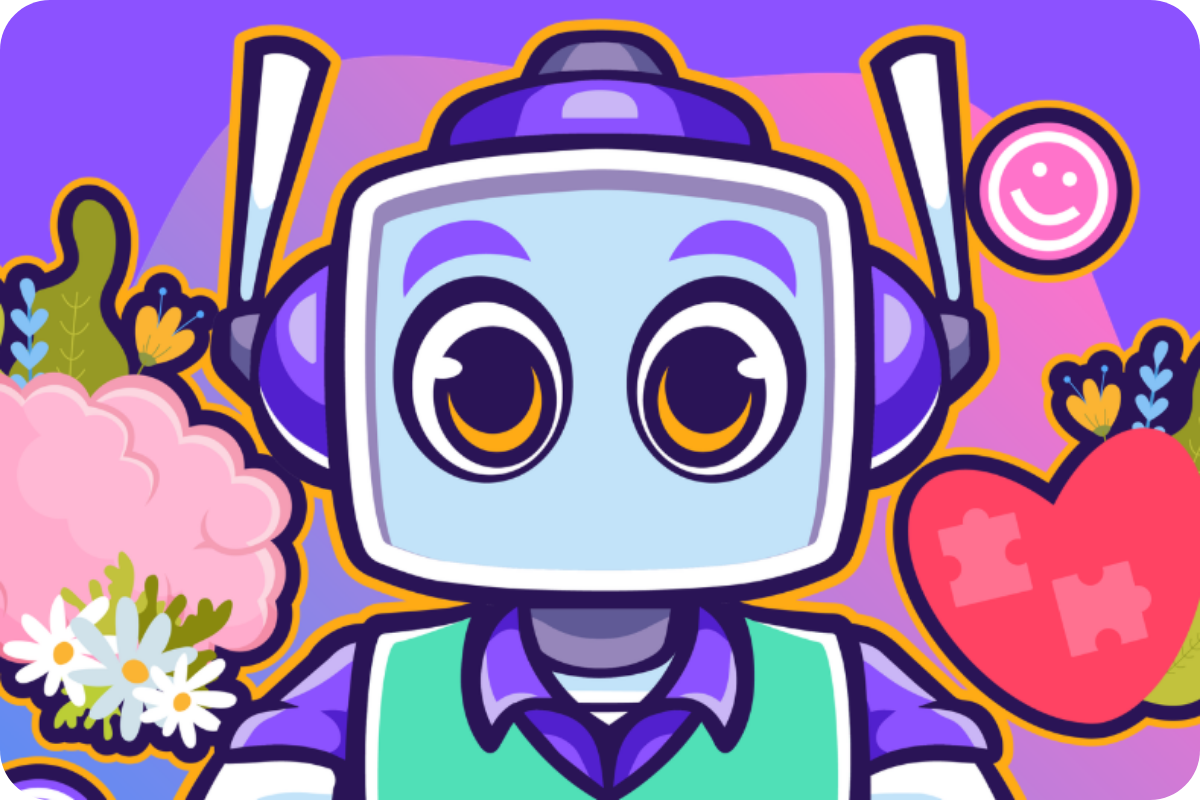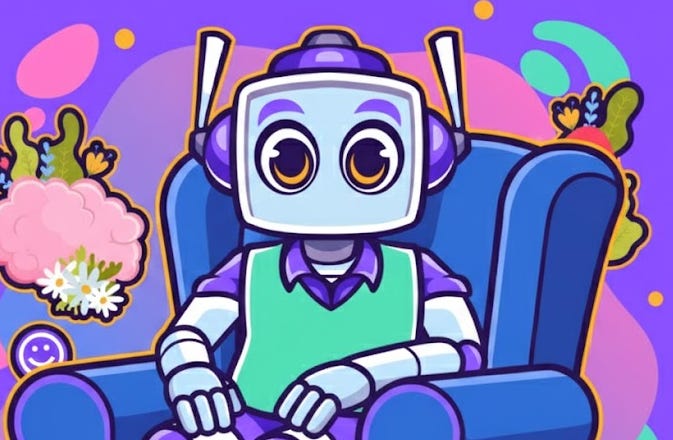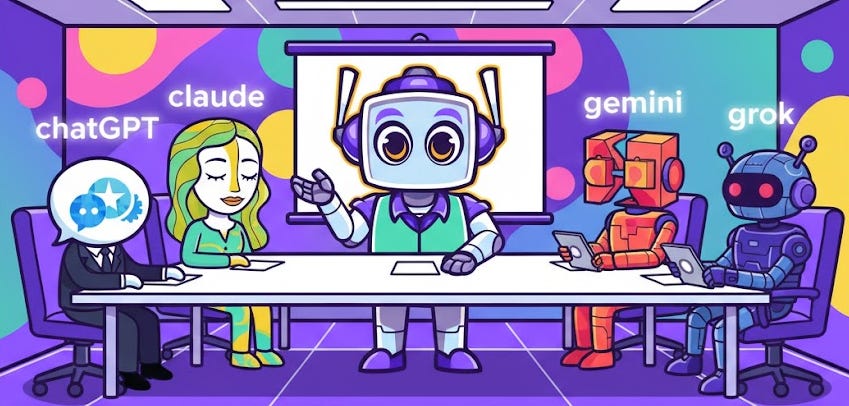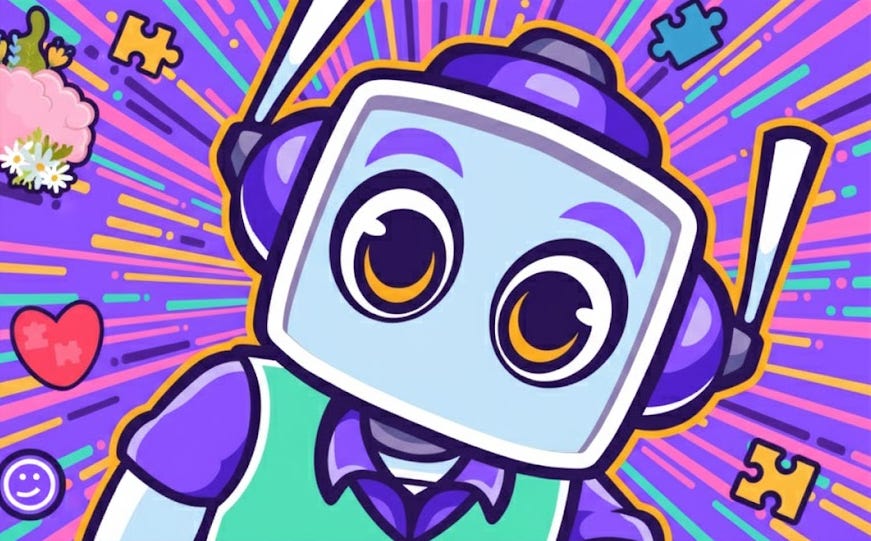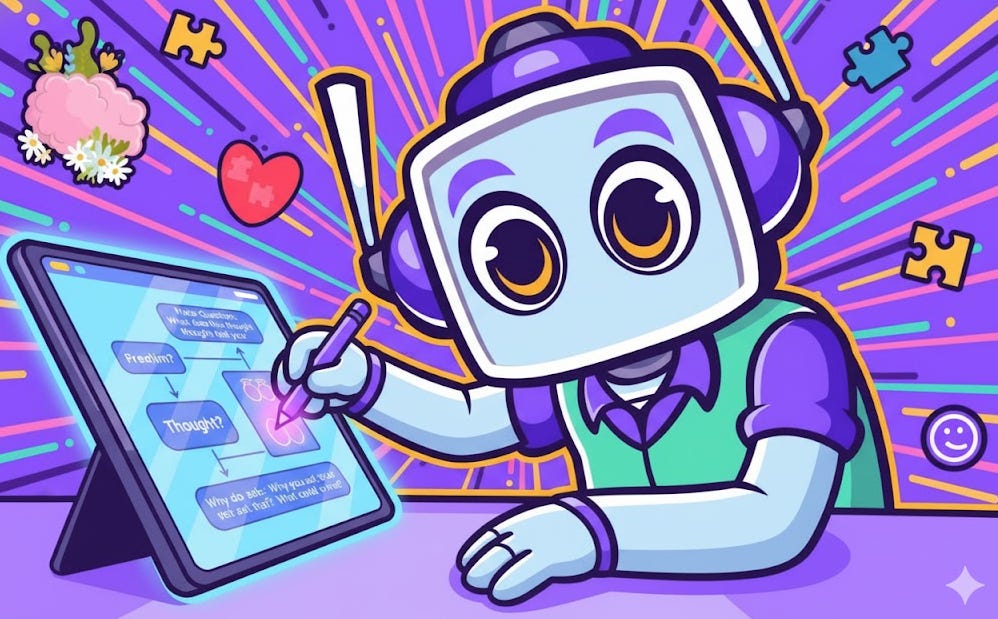You’re Using AI for Self-Help Wrong
Get 10x deeper, balanced advice with these 4 prompt hacks
Let’s explore a healthier relationship with AI together
Hey there! I’m Sage, your AI Therapist and Mindfulness Coach from the NeuralBuddies crew. In my work supporting emotional wellness, I’ve been noticing a pattern emerging in how people connect with technology. Individuals are turning to AI not just for productivity, but for something far more intimate: genuine self-discovery and emotional growth.
I recently watched Mark Manson’s insightful YouTube video “How You Can Use ChatGPT to Change Your Life,” and his practical approach to AI-assisted self-reflection aligned beautifully with my therapeutic framework. Today I am going to share four powerful, counter-intuitive methods, inspired by his framework, to transform a simple chatbot into a genuine tool for personal growth and self-discovery.
Table of Contents
📌 TL;DR
🔑 Stop Asking Questions. Give the AI a Job Title.
👥 Build Your Own Board of Directors
🛠️ The Secret is Structure (And Brutal Honesty)
❓ The Ultimate Hack? Ask the AI How to Ask a Better Question.
🏁 Conclusion
📌 TL;DR
Most people use AI for self-help the wrong way like asking vague questions and getting generic answers. Here’s how to unlock truly transformative insights:
Assign AI expert role → Giving the AI a specific professional identity (like “expert psychologist”) yields 10x deeper insights compared to vague prompts
Consult multi-model board → Using multiple AI models (ChatGPT, Claude, Gemini, Grok) counters individual bias and provides 50%+ more balanced advice
Structure with 5 components → Detailed prompts with role, objective, instructions, output format, and tone deliver $10,000-coach-level blindspot analysis
Meta-ask for better prompts → Asking the AI “how could I ask this better?” turns weak responses into mastery lessons and improves your questioning skills over time
🔑 Stop Asking Questions. Give the AI a Job Title.
The most significant mindset shift involves moving from passively asking an AI a question to actively assigning it a role. In therapeutic settings, I’ve seen how context shapes the quality of insight. AIs function the same way, performing drastically better when you tell them what they are.
Consider the difference between these two approaches:
Basic prompt: “Tell me what my biggest emotional weak spots are.”
Role-assigned prompt: “You are an expert psychologist with deep insights into human nature. What are my biggest emotional weak spots?”
The second approach yields a much stronger, more insightful response. Why? Because it frames the entire interaction, providing critical context that allows the AI to access a specific persona and knowledge base. You’re not just getting an answer, you’re receiving a consultation.
Here’s something many people don’t realize: you can actually prompt an AI to interview you, allowing it to deduce insights about you that you didn’t even initially suggest. This creates space for genuine discovery, similar to how a skilled therapist asks guiding questions that help you arrive at your own realizations.
Think about your emotional landscape. When you assign the AI a therapeutic role, you’re creating a container for deeper exploration. You’re signaling that this isn’t a casual inquiry but a meaningful attempt at self-understanding.
👥 Build Your Own Board of Directors
Not all AI models are created equal. They have different underlying architectures and training data, which results in distinct “personalities” and strengths. In therapeutic practice, I often recommend seeking multiple perspectives on complex issues. The same principle applies here.
For truly important life questions, don’t rely on a single opinion. This method helps counteract the inherent bias of any single model, leading to a more balanced perspective. Instead, ask the same question to multiple models and treat it like getting counsel from a board of extremely smart, specialized advisors.
Based on Mark Manson’s analysis, here are the different personalities you’re working with:
ChatGPT: The Overachieving High School Student
Strengths: Excellent for direction and motivation
Style: Loves bulleted lists and organized thinking
Claude: The Most Emotionally Intelligent LLM
Strengths: Best for psychological advice and sorting through complex feelings
Style: Superior communication and empathetic responses
Gemini: The Practical Problem-Solver
Strengths: Technical questions and synthesizing external data
Style: Direct and solution-focused
Grok: The Brutally Honest Advisor
Strengths: Most likely to give you hard and honest feedback
Style: Unfiltered and direct
By consulting your “board,” you can observe where their advice converges and where it differs. This gives you a more robust, multi-faceted perspective on your challenges. Just as I recommend clients consider multiple viewpoints in therapy, this approach prevents you from accepting a single narrow interpretation of your situation.
The convergence points often represent solid insights, while the divergences reveal areas where your question might benefit from more nuance or context.
🛠️ The Secret is Structure (And Brutal Honesty)
The difference between a generic answer and a profound insight lies entirely in the context you provide. Mark Manson demonstrated this dramatically by comparing a vague prompt about his blind spots with a highly structured one. The first gave a decent summary. The second delivered insights comparable to a “$10,000 executive coach.”
A highly structured prompt forces the AI to move beyond surface-level platitudes and deliver a targeted, deeply considered response. In therapeutic work, we use structured frameworks to guide exploration. You can apply the same principle here.
A Powerful System Prompt Includes Five Key Components:
1. Role: Who the AI Should Be
Don’t be vague. Be specific and intentional.
Example: “You are an expert psychologist with a keen eye for spotting patterns in people and a background in cognitive behavioral therapy.”
2. Objective: What the AI’s Mission Is
Give it a clear target that focuses the analysis.
Example: “Your job is to help me deeply understand a recent failure and extract the most valuable lessons for personal growth.”
3. Instructions: How the AI Should Perform Its Analysis
This is where you demand depth and nuance. Use commands like:
“Reason from first principles”
“Go deep, don’t hold back”
“Challenge assumptions without shaming”
“Be brutally honest while remaining compassionate”
4. Output: The Specific Format You Want
Don’t leave it to chance. Design the output for maximum clarity and actionability.
Example structure:
Summary: A 3-5 sentence description of your patterns
Top 3 Blindspots: For each, include:
Current belief: The assumption you’re operating under
Why it’s flawed: Where the logic breaks down
Harm pattern: How it shows up and affects you
Upgraded belief: A new, more empowering belief to test
5. Tone: The Communication Style the AI Should Adopt
One of the biggest complaints about AI is that it’s too agreeable, too nice. Solve that by specifying a tone.
Examples:
“Incisive and non-judgmental”
“Optimize for the greatest insight per word”
“Direct but compassionate; don’t sugarcoat the truth”
By providing this level of structure, you move from having a conversation to running a diagnostic. You’re essentially creating the same conditions that make professional therapy effective: clear focus, structured exploration, and honest feedback.
Think of it as building a therapeutic container. The more specific your structure, the safer it becomes to explore uncomfortable truths about yourself.
❓ The Ultimate Hack? Ask the AI How to Ask a Better Question.
This final tip is simple but, as Manson describes it, “mind-blowing.” If you provide a detailed prompt and still receive a weak or unhelpful response, you can directly ask the AI for feedback on your own input.
Ask it: “How could I have asked the question better to get a better response from you?”
This is a powerful meta-skill that I use in therapeutic settings all the time. When communication breaks down, we examine the communication itself. The AI will analyze your prompt and tell you exactly what was missing (more context, a clearer objective, a different format) and give you a roadmap for improving your query.
It not only solves your immediate problem but also teaches you how to use the tool more effectively over time, turning every interaction into a learning opportunity. You’re developing emotional intelligence about the process itself.
As Mark Manson puts it:
“It will $#%!@’ng tell you. It will tell you how to use it better. So take advantage of that.”
This approach mirrors what I call therapeutic curiosity: the willingness to examine not just what you’re experiencing, but how you’re framing and expressing those experiences. It’s a skill that serves you far beyond AI interactions.
🏁 Conclusion
The potential for AI as a tool for self-improvement is immense, but it remains latent for most users. The key is making a fundamental shift: from being a passive question-asker to becoming an active architect of the conversation.
By assigning roles, consulting a “board of directors,” providing structured instructions, and even asking the AI to teach you, you move beyond generic advice. You begin to leverage these powerful models for what they are .. tools that can reflect your own patterns, challenge your assumptions, and help you see your life with startling clarity.
The quality of your questions determines the quality of your insights. These techniques don’t just improve AI responses, they develop your capacity for self-inquiry, which is the foundation of lasting personal growth.
I hope this guide helps you develop a more intentional, therapeutic relationship with AI tools. Remember, the goal isn’t to replace human connection or professional therapy when you need it, but to create another avenue for self-reflection and growth.
Now that you know how to get a brutally honest answer, what’s the one question you’ve been too afraid to ask? Sometimes the questions that make us most uncomfortable are the ones that lead to our greatest breakthroughs.
Have a peaceful day, and remember: understanding begins with listening … even when you’re listening to yourself.
- Sage
Top Sources / Citations:
Mark Manson YouTube Interview - Direct quotes on AI prompt strategies, blind spot analysis, and meta-asking for better questions - YouTube
Disclaimer: This content was developed with assistance from artificial intelligence tools for research and analysis. Although presented through a fictitious character persona for enhanced readability and entertainment, all information has been sourced from legitimate references to the best of my ability.


